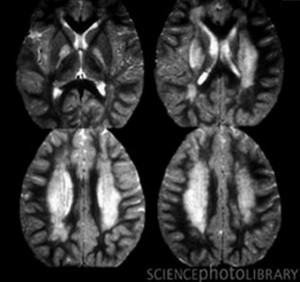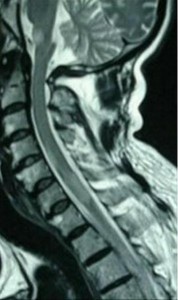Acute Disseminated Encephalomyelitis
What is Acute Disseminated Encephalomyelitis?
Acute Disseminated Encephalomyelitis resembles to the disease condition called MS or Multiple Sclerosis and its synchronism is ADEM. This kind of disease condition is a nonvasculitic kind of inflammatory condition which is considered to be as demyelinating. What happens is that instead of doing the function of the immune system which is to fight or get rid of the infection, the result is reversed where in it leads to inflammation in the person’s central nervous system which leads to demyelization. It has a characteristic of involvement of the brain’s white matter and spinal cord. Aside from that, it is known to be a monophasic kind of illness. It occurs in the association of either vaccination or immunization or perhaps the presence of systemic viral infection. Other experts would define it as a rare form of neurological disease condition. While others, consider it as an autoimmune and allergic for of encephalitis. And still others define it as a perivascular kind of inflammation that has a presence of edema. It is known that the children are mostly affected by this condition than adults. However, it can affect anybody.
CT Scan indicating Acute Disseminated Encephalomyelitis
White Patches Resemble Inflammation in the Brain
Image Source: Science Photo Library
Acute Disseminated Encephalomyelitis Symptoms
Some people who are battling with this disease actually have infection first before acquiring ADEM. Children who have this condition often report to have severe and prolong aching of their heads. Aside from that, due to the presence of infection, inflammatory process is present in a form of fever. Aside from these, the persons manifest the following symptoms:
- Dysphagia or difficulty in swallowing
- Weak in their legs or arms
- Falling and being unsteady
- Confusion
- Coma
- Ataxia or unsteady in gait
- Drowsiness
- Fatigue
- Vomiting
- Seizure
- Nausea
- Upper respiratory tract infection
- Visual disturbances such as optical neuritis
- Muscular movements is another problem
Acute Disseminated Encephalomyelitis Causes
The exact occurrence of why ADEM occurs is unknown. But studies show that as mentioned earlier, a great deal of patients who are suffering from this disease actually had a history of infection prior to diagnosing them as having ADEM disease. The cause of which may be due to either:
Bacterial infection which includes:
- Leptospira
- Beta hemolytic Streptococci
- Borrelia Burgdorferi
- Mycoplasma Pneumoniae
Viral infection which may possibly include:
- Measles
- Mumps
- Varicella zoster
- Rubella
- Enterovirus
- Influenza virus
- Epstein Barr virus
- Herpes simplex virus
- Hepatitis A
- Coxsackievirus
- Cytomegalovirus
Vaccination of either the following vaccines:
- Varicella vaccine
- Influenza vaccine
- Polio vaccine
- Pertussis vaccine
- Hepatitis B vaccine
- Rabies vaccine
- Diphtheria vaccine
- Measles vaccine
- Rubella vaccine
- Mumps vaccine
- Pneumococcus vaccine
- Japanese Encephalitis vaccine
Acute Disseminated Encephalomyelitis Treatment
The common and effective treatment of persons who are suffering from ADEM varies individually. What may be effective to one and may not be effective to others. The treatment is aimed at suppression of the aberrant immune systemic response. The common treatment includes:
Intravenous Immune Globulin therapy
This involves the antibody administration which is extracted from the person’s plasma. This is considered as the second choice. It is done with the use of blood product in order to reduce the possibility and risk of immune related disease.
Plasmapheresis
It is done through the use of machine which culls out the immune system component from the person’s circulation to be able to reduce the immune or inflammatory response. This kind of therapy takes for a few hours and is suggested to be done for 10-14 days maximum on alternative days. There is a need for central venous catheter to be able to rapidly remove the blood when necessary. Despite the benefits of this therapy, this therapy has its risk or bad effects such as discomfort, infections and bleeding tendencies.
Intravenous Corticosteroids
This is considered as the first line of drugs taken by patients who are diagnosed with such condition. This is suggested to be given for a week to be able to kill the bacteria or virus and will only taper the dosage after a week has lapsed. This medication is known for inflammatory reduction and will speed the recuperation process of the disease.
When one is on corticosteroids, the person needs to be monitored for low potassium level, disturbance in the sleep pattern, and blood glucose level. Aside from that, the side effect of this medication is change in one’s mood. Complications that are associated with this disease includes swelling of the face, flushing of the cheeks, gaining of weight, metallic like taste, and sleeping disturbance.
Chemotherapy
When the person is on the severe form of this disease, the physician may suggest that the person undergoes chemotherapy. Chemotherapy medication may be prescribed such as Mitoxantrone or Cyclophosphamide.
Acute Disseminated Encephalomyelitis Prognosis
Studies and statistically shows that there is approximately 10-30% of the mortality rate. Most often, children with this condition may have full recovery in a slow phase. And approximately up to 60-90% has been reported to have minimal to no deficits in the neurological aspect.
Patient who is under the treatment of corticosteroid or steroids, it can lead to the reduction of symptoms and prevent newer symptoms to develop as well as having a good prognosis. The prognosis for one person to another varies. The recuperation of one child will be slowly and will continue till it reaches full recovery with the help of treatment being provided. Some reports that they undergo recurring symptoms during their slow phase recovery. Such recurring symptoms include weakness, numbness or visual blurring. Aside from these, one must know that when a person is diagnosed with the severe form of this disease condition, there is a risk for fatality and some will be rediagnosed as having MS or Multiple Sclerosis. Also, when a person is diagnosed earlier with the disease condition and given the right treatment therapy without further delay, the overall prognosis will be good.
Acute Disseminated Encephalomyelitis Pictures
Demyelination of the Spinal Cord

